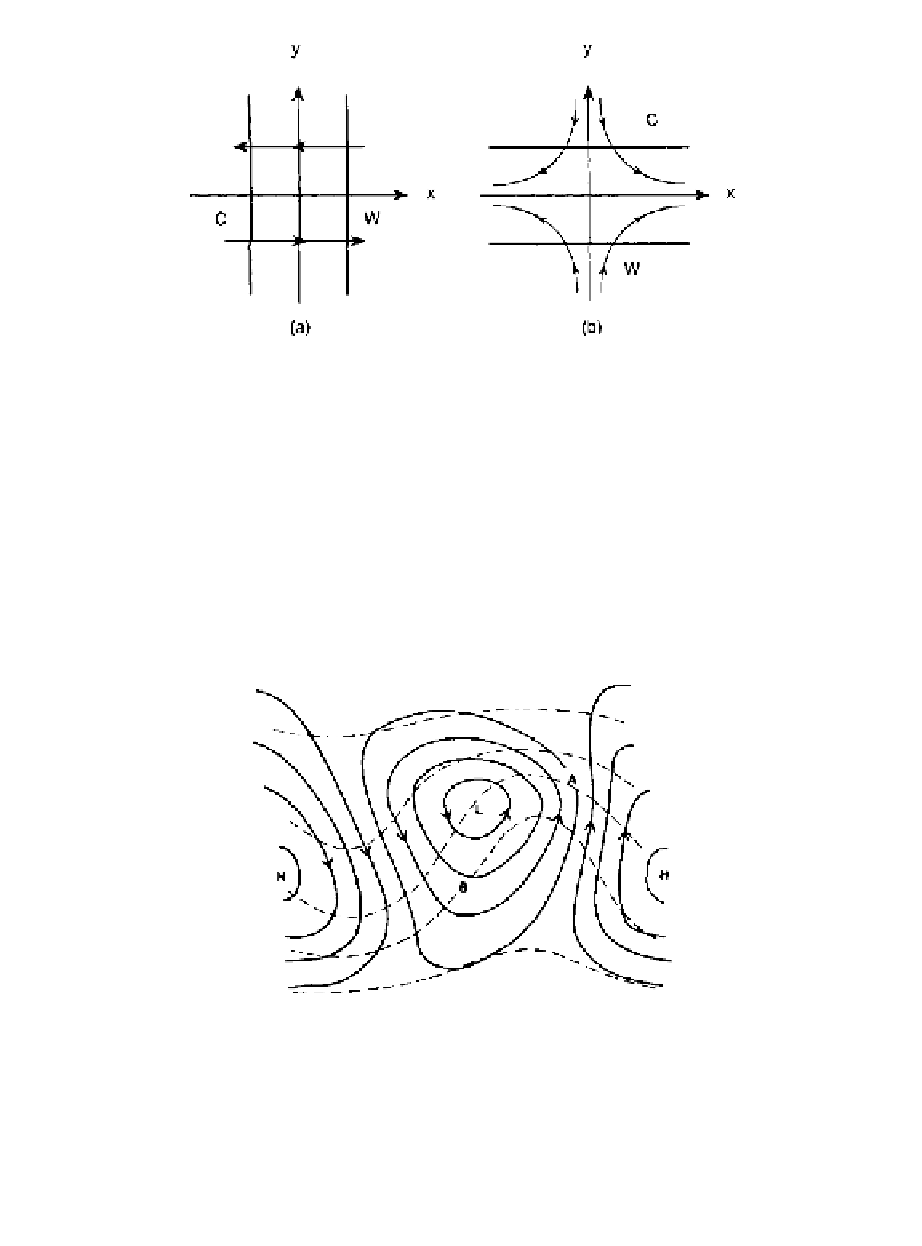Geography Reference
In-Depth Information
Fig. 9.1
Frontogenetic flow configurations: (a) horizontal shearing deformation and (b) horizontal
stretching deformation.
direction perpendicular to the shear vector. Thus, the x-directed temperature gra-
dient in Fig. 9.1a is both rotated into the positive y direction and intensified by the
shear. Horizontal shear is an important frontogenetic mechanism in both cold and
warm fronts. For example, in the schematic surface pressure chart of Fig. 9.2 the
geostrophic wind has a northerly component west of point
B
and a southerly com-
ponent east of point
B
. The resulting cyclonic shear will tend to rotate the isotherms
and to concentrate them along the line of maximum shear passing through B. (Note
the strong cold advection northwest of B and the weak thermal advection southeast
of B.)
Fig. 9.2
Schematic surface isobars (solid lines) and isotherms (dashed lines) for a baroclinic wave
disturbance. Arrows show direction of geostrophic wind. Horizontal stretching deformation
intensifies the temperature gradient at
A
, and horizontal shear deformation intensifies the
gradient at
B
. (After Hoskins and Bretherton, 1972. Reproduced with permission of the
American Meteorological Society.)

